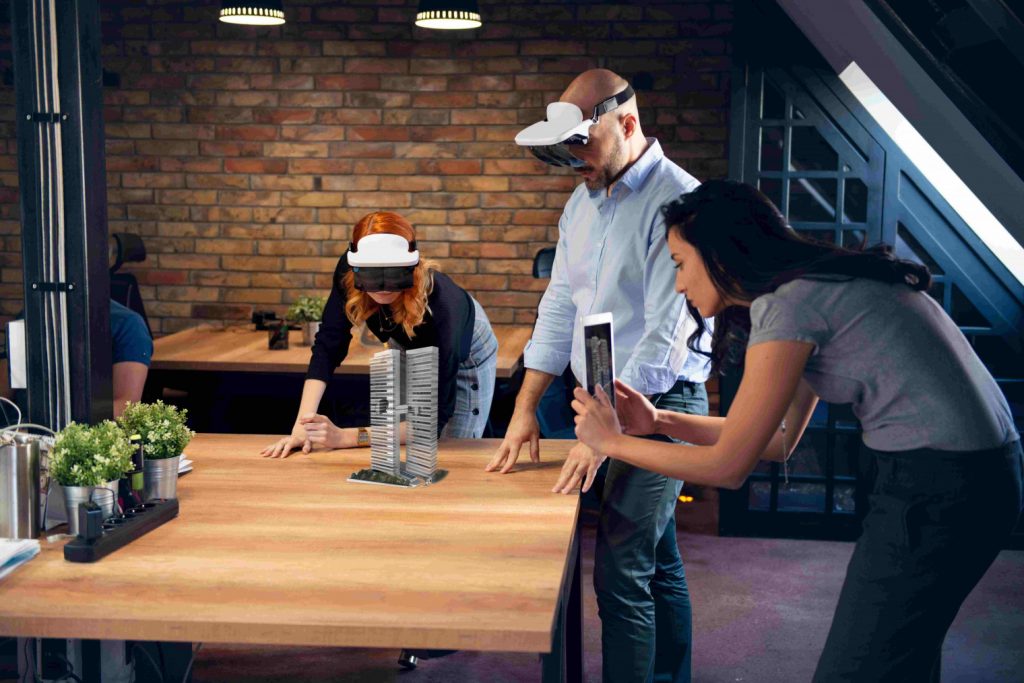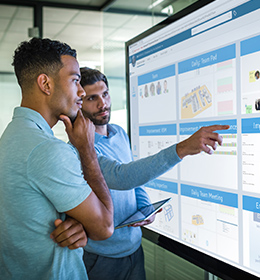COVID-19 re-emphasizes the need for the human in technology
Fully understanding the COVID-19 virus proves elusive, with new mysteries and dangers revealed every day. The crisis and now the period of de-confinement have plunged us into a state of urgency and uncertainty.
It reminds of us that our modernity has never really released us from the biological and earthly laws of our condition. The myth of a techno-centered superiority has been exposed, and now we face immense vulnerability, intensely human in our material space, where we are having to demonstrate our capacity for innovation and adaptation.
Everything shifts to the present
COVID-19 precipitates change and incites us to refocus on common activities that bind us – to educate, nourish, protect and care. Before the virus, we knew the world was becoming more unsustainable. We anticipated an environmental crisis for the future, but without a sense of urgency. The SARS-CoV-2 virus brought a crisis immediately home to us, putting immense strain on our healthcare system.
However, this crisis has made something extraordinary happen. We know how to handle the technology. The extreme issues we face are foremost human.
Because hospitals are such technical workspaces, we can forget that besides being safe, they should be comforting, even pleasant, in quality of life for all users – the ones who care, the ones cared for, even the ones who clean and maintain.
Nurses and doctors know their jobs; but in many cases, COVID-19 has overwhelmed them. Our medical workers have had to learn to do things in conditions that are extreme; and the more extreme, the less relevant the process as it has been designed and the more that the human is needed. In the end, it can come down to one person staying one more hour to save one more life. Nothing is more human.
What we need to do does not exist in our previous modeling; but, it is already happening, through immediate human action – people taking individual responsibility, acting human in the midst of the crisis, moving in the right way as they sense how to do it. When the process is not yet informed from previous actions, when models fail and process management does not respond to the moment, then responsibility moves down and relies on the team – the human – to re-work the process.
Meeting emotional and psychological needs
Until now, design related to COVID-19 has focused primarily on ensuring safety for medical staff and patients; but soon it will be about what’s essential for all of us as confinement ends. The challenge becomes how to quickly and intelligently restart our social and economic lives – including social distancing, resolving travel and transport issues, gathering in public places, businesses, restaurants.
The real innovation challenge is going to be simultaneously instilling confidence while ensuring safety. We have to recreate our spaces with the most elegance possible, and avoid losing the soul of our places. We must design social distancing that is pragmatic, but engaging and comforting as well.

The focus must be human, more than technical. We need Design that is beyond the technological to the empathetic – the caring, emotional and psychological, along with the physical. As never before, the term “human-centered design” is proving its value.
At its essence, Design is about matter (the material used) and human agency. Since the Industrial Revolution, widely expressed with the Bauhaus movement, Design’s purpose has been to humanize technology, addressing the welfare of people; and not just physical needs, but emotional and psychological, too.
This is the journey of the designer, deep diving to get closer to our humanity, its contradictions, complexities and exceptional behaviors, close to its nature, rational and emotional, all together. In this sense, for Design, people are the real material in materialism.
Connecting technology and humanity
Let’s rethink the balance of technology and people, perhaps by considering technology and humanity as mirrors of the same ecosystem. Rethinking the relationship between Virtual and Real, perhaps we can address not just the crisis of COVID-19, but nothing less than the sustainability of humankind within our biosphere.
When we inform, mediate and connect technology and humanity wherever gaps or disconnects appear, we need to use human behaviors to guide the moment – how people think and act, but also feel and respond. This opens surprising new intersections for improvement with smart creative solutions for design.
Lockdowns and social distancing can teach us about the coming world. Consider that our present experiences impose a reversal of known expectations: the Virtual (online meetings, online events) has become our sensory view of daily life, while the Real (with its physical, sensory qualities) is a remembered extension.
We used to ask ourselves about virtualizing reality; now we can ask what justifies that something should be materialized? Do we need that car, that office, that business trip?
The new real is not known for now, because our current models are based on the knowledge and know-how we gathered in pre-COVID time. The new real must include something that until now we have put in the shadows, i.e., people’s sense-able incarnation encompassing the physical, tactile, emotional, psychological and genomic (genes and their inter-relationships) and their combined influence on growth and development of humanity and the world around us.
What is the new real?
The new real is a mix of digital, physical and (especially) human, a completely new hybridization beyond V + R where we thought of each as a relevant and distinct entity. The ideation we created was the Virtual plus the Real. After COVID-19, the plus is irrelevant, because the Virtual and Real happen simultaneously.
Our future virtual twin will have to enhance its representation of the human to include the sense-able incarnation, instead of rendering just a physical asset and dimension. For example, beyond a virtual human model that shows a certain physical size and dimension to fit into a hospital bed, now we want to know how a real person will feel in that bed – is it easy to roll over, are there pressure points from the mattress, will those be injurious? With precision design and simulation, we can explore potential outcomes, but it is the systemic embrace of human considerations in the first place that leads to asking the questions.
Dassault Systèmes 3DEXPERIENCE platform delivers “design space” with 3DSpace, where convergence of recognition, questioning and nurturing data occurs (fitting imprecise and fuzzy inputs into well-defined actions). We craft these into a referential of the virtual world as a projection of collective living experiences. From modeling a single product to designing a city (a huge referential of complex systems, roles and interactions), we visualize Design’s relevant impact envisioning people engaged in their day-to-day actions. There is no progress without the human at the core.

The 3DEXPERIENCE platform contributes not only through its apps, but also by creating room for collaboration with openness, inclusivity of mindset, new behaviors. Through Software as a Service (SaaS) on the cloud, projects, solutions and apps become readily available to as many people and communities as possible. When a path is collectively adopted, our IFWE development loop connected with the platform enriches and transforms the process to co-create value.
The platform becomes hyper-participative – an environment of dialogue, ideas and testing – where “human and digital” dialogue plays out. Relationships and interactions iterate systemically, everything rebalancing towards a new referential for sustainability.
Design for life
I began an initiative at Dassault Systèmes’ DESIGN Studio in 2016 called Design for life. It consolidates Design best practices, research, insights, impressions, considerations that taken together allow the emergence of a new form of Design thinking.

Rendered through tools such as emotional mapping, mood boards and more, the process brings Design thinking within the heart of the 3DEXPERIENCE platform itself. At the crossroads of thinking and doing, Design for life brings these moments in motion into convergence, into harmony, where there can be reflection on the actions.
With its focus on people and collaboration, the 3DEXPERIENCE platform draws us into a very different environment of sense-able and sustainable Design, accessing the emotional along with engineering to create a Sustainable Design Practitioner. This human-driven process builds Design, but also gets us to think about “If?” and “Why?” it should be done considering other perspectives. Those are very different and important questions that have never been more relevant.
Open to virtual, real and human, post-COVID Design should be “of the world” and “evolved in it” in symbiosis with all around us. We will no longer talk about solutions and challenges, but about paths, tracks and waves . . . a human-technological journey for making and remaking the world.


